- BY kq
- POSTED IN Granite
- WITH 0 COMMENTS
- PERMALINK
- STANDARD POST TYPE
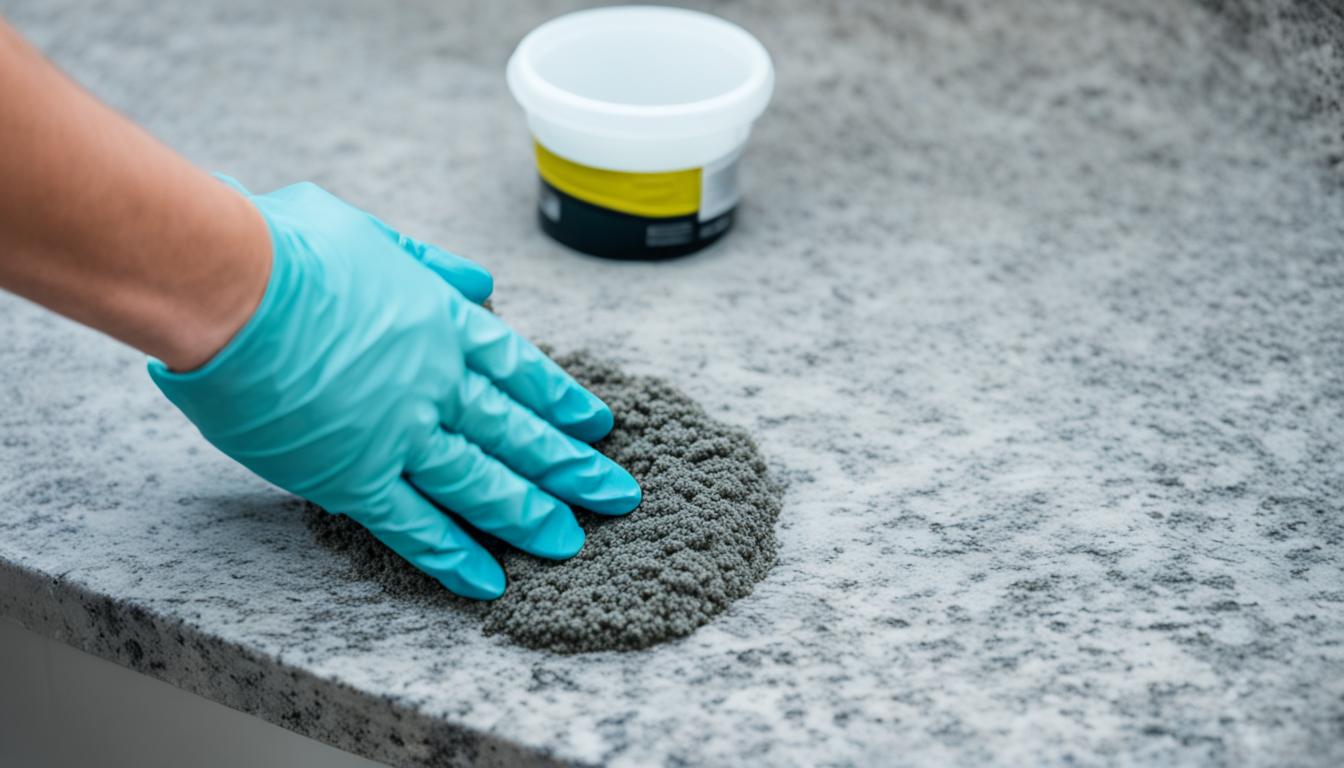
Granite stone steps can add a touch of elegance and sophistication to any outdoor space. However, to keep them looking their best, regular cleaning and maintenance are essential. In this article, we will provide you with expert tips and techniques on how to effectively clean and maintain your granite stone steps.
Granite is a durable and natural stone that requires special care to preserve its beauty. By following the right cleaning methods and using the appropriate products, you can ensure that your granite steps remain spotless and free from stains or grime.
Whether you have a residential or commercial property with granite stone steps, our comprehensive guide will take you through every step of the cleaning process. From preparing the area and creating a suitable cleaning solution to scrubbing away stains and applying a protective sealant, we’ve got you covered.
Not only will we provide you with detailed instructions, but we’ll also share valuable tips and tricks to make the cleaning process easier and more effective. With our guidance, you’ll be able to maintain your granite stone steps with confidence, ensuring they stand the test of time.
So, let’s dive in and discover the best ways to clean and maintain your granite stone steps.
Key Takeaways:
- Cleaning and maintaining granite stone steps is essential to preserve their natural beauty.
- Understanding the composition and vulnerabilities of granite helps in choosing the right cleaning products and methods.
- Proper preparation, including removing surface debris and gathering cleaning supplies, is crucial for effective cleaning.
- Creating a suitable cleaning solution and applying it correctly ensures safe and efficient cleaning.
- Scrubbing and removing stains requires the right tools and techniques for effective results.
Understanding Granite Stone Steps: How to clean granite stone steps
Before diving into the cleaning process, it’s important to understand the characteristics and maintenance requirements of granite stone steps. Knowing the composition and vulnerabilities of granite will help you choose the right cleaning products and methods.
Granite stone steps are renowned for their durability, natural beauty, and timeless elegance. They are often used in outdoor landscapes due to their ability to withstand harsh weather conditions and heavy foot traffic. However, like any other surface, regular maintenance is essential to keep them looking their best.
Granite is a type of igneous rock composed primarily of quartz, feldspar, and mica. Its unique crystalline structure and dense composition make it highly resistant to scratches, stains, and heat. However, it is not entirely impervious to damage and requires proper care to maintain its shine and longevity.
To ensure the longevity and aesthetic appeal of your granite stone steps, regular maintenance is essential. This includes cleaning, sealing, and protecting the surface from potential harm. By understanding the specific maintenance needs of granite, you can develop a comprehensive care routine for your steps.
Granite stone steps maintenance involves a combination of regular cleaning and periodic sealing. Cleaning granite steps involves removing dirt, debris, and stains to prevent the accumulation of grime and preserve the stone’s natural beauty. Sealing the surface creates a protective barrier, making it easier to clean and enhancing its resistance to staining and discoloration.
It’s important to note that not all cleaning products are suitable for granite stone steps. Harsh chemicals and abrasive cleaners can damage the surface, dull its shine, or even cause etching. It’s best to use pH-neutral cleaners specifically designed for granite surfaces.
By understanding the unique qualities of granite stone steps and following proper maintenance practices, you can ensure that your steps maintain their beauty and durability for years to come.
Preparing for Cleaning: How to clean granite stone steps
Before you embark on the cleaning process for your granite stone steps, it’s crucial to properly prepare the area and gather the necessary cleaning supplies. Taking these initial steps will ensure a smooth and effective cleaning experience. Follow these tips to get started:
- Clear the Area: Remove any objects or obstacles from the steps, such as potted plants, furniture, or decorative items. This will give you unrestricted access to the entire surface area of the steps.
- Sweep Away Loose Debris: Use a broom or a brush with stiff bristles to sweep away loose dirt, leaves, and other debris from the surface of the steps. This will make the cleaning process more effective and prevent any scratching caused by abrasive particles.
- Gather Cleaning Supplies: Ensure you have all the necessary cleaning products for granite steps. Look for mild, non-abrasive cleaners specifically designed for use on granite surfaces. Avoid using acidic or abrasive cleaners that can damage the natural stone. Consult with your local hardware or home improvement store for recommendations on suitable products.
Pro Tip: When choosing cleaning products for granite steps, opt for those that are specifically formulated for stone surfaces. These products are gentle enough to clean effectively without causing any harm to the granite.
Once you have completed these preparatory steps, you are ready to move on to the actual cleaning process. Remember, proper preparation is essential for achieving the best results and preserving the long-lasting beauty of your granite stone steps.
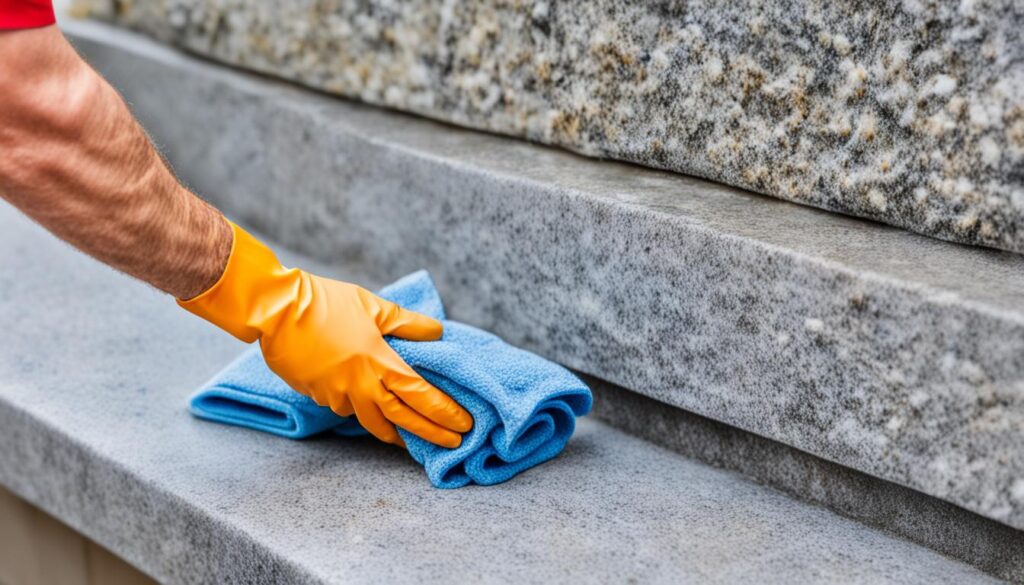
How to clean granite stone steps: Removing Surface Debris
Before you begin the process of deep cleaning your granite stone steps, it’s important to remove any surface debris. The accumulation of dirt, leaves, and other loose particles can hinder the efficacy of the cleaning process and potentially cause scratches on the surface of your steps. Thankfully, there are DIY methods and natural solutions available that can help you eliminate this debris without causing any damage.
One effective method to remove surface debris is by using a soft-bristle brush or broom. Gently sweep the brush or broom across the surface of your granite steps, focusing on areas that have heavy accumulation of dirt or leaves. Be sure to sweep in one direction to avoid pushing the debris back onto the steps.
If there are stubborn particles that are difficult to remove with brushing alone, you can use water and a soft cloth to gently wipe them away. Moisten the cloth with water and carefully blot the affected areas. Avoid using excessive force or scrubbing, as this can potentially scratch the surface of the granite.
For a more natural and eco-friendly approach, you can create a homemade solution by combining equal parts water and vinegar. Fill a spray bottle with the solution and lightly spray it onto the surface of your granite steps. Allow the solution to sit for a few minutes to loosen the debris, then use a soft brush or cloth to gently remove the particles.
Remember, when dealing with surface debris on granite stone steps, it’s important to be gentle and avoid using abrasive materials or harsh chemicals, as they can cause damage to the stone. By following these DIY methods and natural solutions, you can effectively remove surface debris and prepare your granite steps for a thorough cleaning.
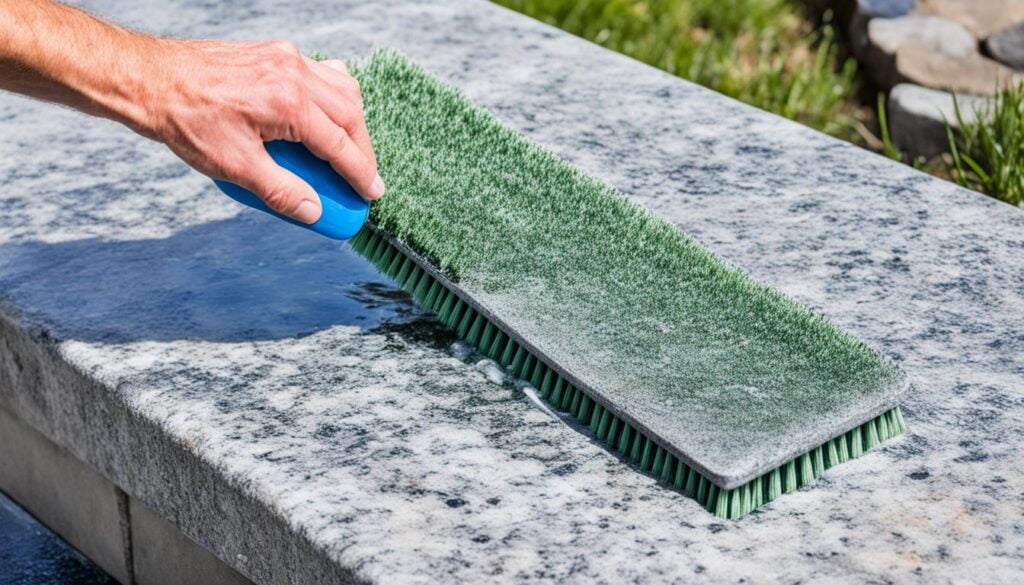
How to clean granite stone steps: Preparing a Cleaning Solution
Creating the right cleaning solution is crucial for safely and effectively cleaning granite stone steps. With the appropriate cleaning products for granite steps and professional granite steps cleaning techniques, you can maintain the pristine appearance of your steps while prolonging their lifespan.
When preparing a cleaning solution for granite steps, it’s important to choose products that are specifically designed for use on natural stone surfaces. Harsh chemicals and abrasive cleaners can damage the granite, so opt for gentle, pH-neutral cleaners. Look for products that are labeled as safe for use on granite or seek the guidance of a professional.
To prepare an effective cleaning solution, follow these simple steps:
- Gather the necessary supplies, including a bucket, warm water, a soft-bristle brush or sponge, and the recommended granite stone cleaner.
- Fill the bucket with warm water.
- Add the recommended amount of granite stone cleaner to the water. Follow the instructions on the product label for the correct dilution ratio.
- Stir the cleaning solution gently to ensure it is well mixed.
- Your cleaning solution is now ready to be used on your granite stone steps.
Remember, it’s always a good idea to test the cleaning solution on a small, inconspicuous area of the steps before applying it to the entire surface. This will help you ensure that the cleaner does not cause any discoloration or damage to the stone.
Pro Tip: For tough stains or deep cleaning, you may need to use a stronger cleaner or seek professional assistance.
By following these steps and using the correct cleaning products, you can effectively remove dirt, grime, and stains from your granite stone steps without compromising their natural beauty. The next section will guide you through the process of applying the cleaning solution to your steps.
Applying the Cleaning Solution
Now that you have prepared the cleaning solution, it’s time to apply it to your granite steps. Proper application techniques are essential to achieve even coverage and effectively clean the surface without causing any damage to the stone.
Here are some DIY granite stone steps cleaning tips and professional granite steps cleaning techniques to ensure a thorough and safe cleaning process:
- Start from the top: Begin applying the cleaning solution from the top of the steps and work your way down. This ensures that any dirt or grime dislodged from higher areas will be rinsed away as you progress.
- Use a soft-bristle brush: Dip a soft-bristle brush into the cleaning solution and gently scrub the surface of the granite steps. This helps to loosen and lift any embedded dirt or stains.
- Focus on problem areas: If there are specific areas with stubborn stains or grime, spend a little extra time and effort to thoroughly clean those spots. You can use a gentle, back-and-forth motion with the brush to target these areas.
- Avoid excessive force: While it’s important to scrub the surface, avoid applying excessive force or using abrasive materials that can scratch or damage the granite. Gentle yet thorough cleaning is key.
- Work in sections: Depending on the size of your steps, divide the area into manageable sections and clean one section at a time. This ensures that each section receives proper attention and cleaning.
- Rinse as you go: As you clean each section, rinse it immediately to remove any loosened dirt or residue. Use a hose or a bucket of clean water to thoroughly rinse the surface.
Pro Tip: If you’re dealing with tough stains or persistent grime, you can let the cleaning solution sit on the affected area for a few minutes before scrubbing. This gives the solution time to work on the stain and make it easier to remove.
Remember, the key to successfully applying the cleaning solution lies in patience, attention to detail, and gentle cleaning techniques. By following these tips, you can effectively clean your granite stone steps and restore their natural beauty.
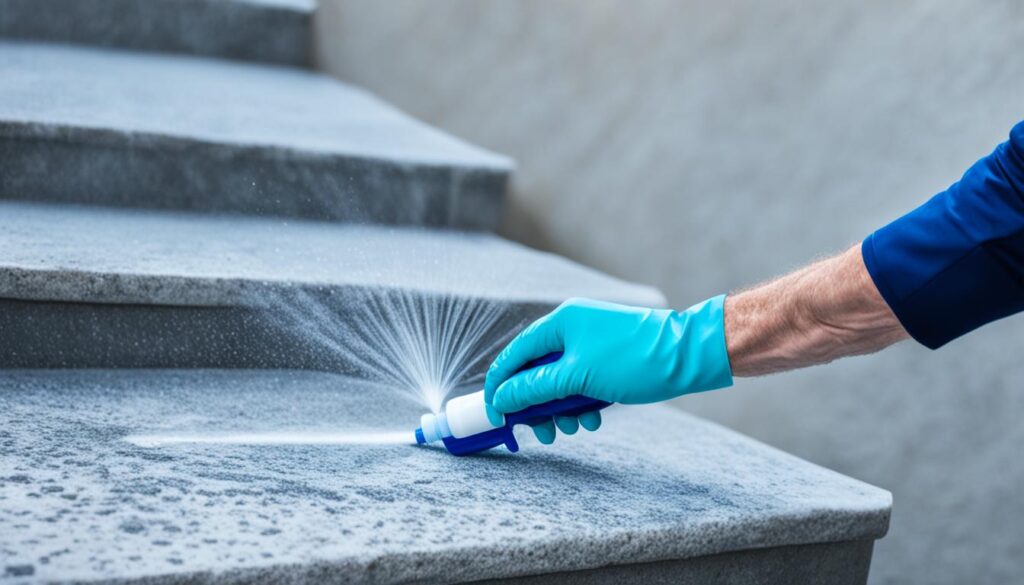
How to clean granite stone steps: Scrubbing and Stain Removal
When it comes to maintaining the natural beauty of your granite stone steps, effective scrubbing and stain removal are essential. In this section, we will guide you through the best ways to clean granite steps and provide professional granite steps cleaning techniques to tackle stubborn stains and grime.
Choosing the Right Tools
Before you start scrubbing your granite stone steps, it’s important to select the appropriate tools. Avoid using abrasive scrub brushes or harsh cleaning materials that can damage the surface of the stone. Instead, opt for soft-bristled brushes or microfiber cloths that are gentle yet effective in removing dirt and stains.
Techniques for Scrubbing and Stain Removal
Start by wetting the surface of your granite steps with water. This will help loosen the dirt and prepare the stone for scrubbing. Apply a small amount of mild detergent or granite-safe cleaner to the surface and gently scrub in a circular motion. Pay extra attention to areas with stains or grime buildup.
Pro Tip: For tough stains, you can try using a mixture of baking soda and water or a non-abrasive granite cleaner specifically designed for stain removal. Always follow the instructions provided by the manufacturer when using cleaning products.
After scrubbing, rinse the steps thoroughly with clean water to remove any remaining cleaning solution. Use a soft cloth or sponge to wipe away any excess moisture. Make sure to dry the steps completely to prevent water spots and streaks from forming on the surface.
Dealing with Stubborn Stains
If your granite steps have deep-set or stubborn stains, additional steps may be necessary. Here are some specialized techniques you can try:
- For oil-based stains, such as grease or cooking oil, sprinkle a layer of baking soda on the affected area and let it sit for several minutes. Then, scrub the area gently with a soft brush or cloth.
- For organic stains, like moss or algae, mix equal parts hydrogen peroxide and water in a spray bottle. Spray the solution onto the stains and let it sit for 10-15 minutes before scrubbing.
- If you’re dealing with rust stains, apply a poultice made of baking soda and water to the affected area. Cover the poultice with plastic wrap and let it sit overnight. The next day, remove the poultice and gently scrub the area.
Example Table:
| Stain Type | Cleaning Method |
|---|---|
| Oil-based stains (grease, cooking oil) | Apply baking soda, scrub gently |
| Organic stains (moss, algae) | Hydrogen peroxide spray and scrub |
| Rust stains | Baking soda poultice and gentle scrubbing |
Remember, different stains may require different techniques, so it’s essential to identify the type of stain and use the appropriate method for effective removal.
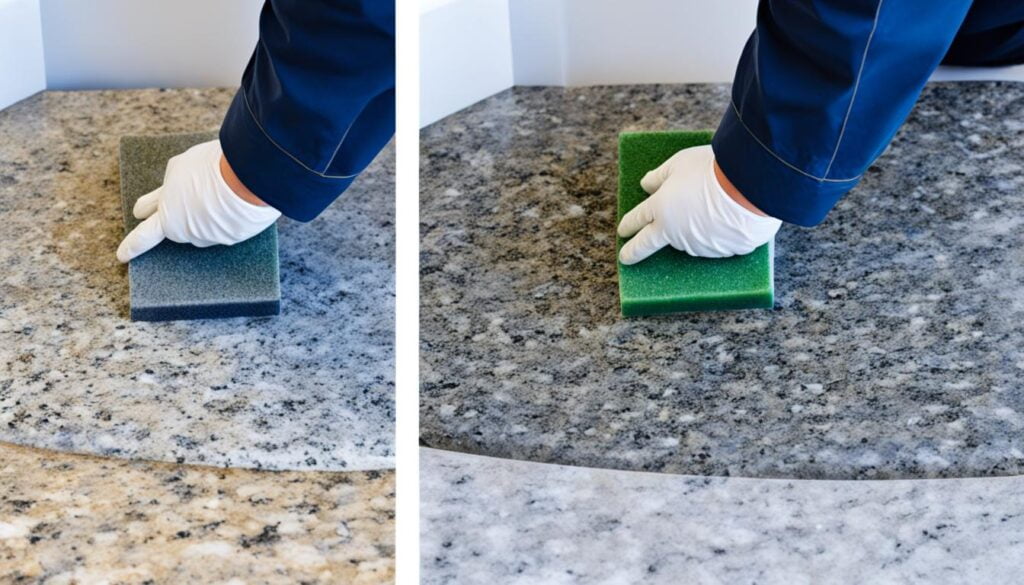
By following these best practices and professional granite steps cleaning techniques, you can effectively scrub away stubborn stains from your granite stone steps, leaving them looking clean, vibrant, and beautiful.
Rinsing and Drying: How to clean granite stone steps
After scrubbing and removing stains from your granite stone steps, it’s crucial to thoroughly rinse them to eliminate any residual cleaning solution. This final step ensures that your steps are left clean and free from any potentially harmful chemicals.
Proper Rinsing Technique
To rinse your granite stone steps effectively, follow these simple yet important steps:
- Fill a bucket with clean water.
- Using a hose or a watering can, pour the water evenly over the entire surface of the steps.
- Ensure that all areas, including corners and edges, receive a thorough rinse.
- Continue rinsing until the water runs clear and no traces of the cleaning solution remain.
By following this rinsing technique, you’ll ensure that your granite steps are completely free from any residue, leaving them looking fresh and vibrant.
Tips for Drying your Steps Effectively
Once you have rinsed your granite stone steps, it’s important to dry them properly to prevent any water spots or streaks. Here are some tips to help you achieve a spotless finish:
- Use a clean, soft microfiber cloth or a squeegee to remove excess water from the steps.
- Start from the top and work your way down, ensuring that every surface is thoroughly dried.
- If necessary, repeat the drying process to ensure all moisture is removed.
Remember to pay extra attention to any areas where water may accumulate, such as corners or crevices. By taking the time to dry your granite steps properly, you’ll prevent any water damage and maintain their pristine appearance.
Sealing and Enhancing the Surface: How to clean granite stone steps
After cleaning your granite stone steps, it’s crucial to take the necessary steps to protect and enhance their surface. Sealing your steps offers several benefits, including increased durability and resistance to stains. It also helps maintain the natural beauty of the granite, making your steps look as good as new.
So, how do you seal your granite stone steps? Follow these simple instructions:
- Choose the right sealant: There are various types of sealants available in the market specifically formulated for granite. Look for a high-quality sealant that is compatible with granite stone. Talk to your local hardware store representative or consult a professional for recommendations.
- Clean the surface: Before sealing, ensure that your granite steps are clean and free from any dirt or residue. Use a mild detergent or granite-specific cleaner, and gently scrub the surface. Rinse thoroughly and allow the steps to dry completely.
- Apply the sealant: Follow the instructions provided by the sealant manufacturer. Typically, you will need to pour the sealant onto the surface of the steps and spread it evenly using a clean, lint-free cloth or brush. Make sure to cover the entire surface, including the edges.
- Allow curing time: After applying the sealant, give it sufficient time to cure. The curing time may vary depending on the brand and type of sealant. Refer to the manufacturer’s instructions for the recommended waiting time.
- Buff the surface: Once the sealant has cured, gently buff the surface of the steps using a soft cloth. This will help remove any excess sealant and enhance the shine of the granite.
Sealing your granite stone steps should be done periodically, depending on the level of foot traffic and exposure to the elements. It is recommended to reseal your steps every 1 to 3 years for optimal maintenance.
Remember, proper maintenance and regular cleaning are essential to ensure the longevity and beauty of your granite stone steps. By following these steps, you can safeguard your steps against everyday wear and tear and enjoy their exquisite aesthetic appeal for years to come.
Regular Maintenance and Cleaning Tips : How to clean granite stone steps
Proper maintenance is crucial for maintaining the natural beauty of your granite stone steps. By following these regular cleaning tips, you can ensure that your steps remain in top condition, free from dirt, stains, and debris.
1. Sweep Regularly
To prevent the accumulation of dirt and debris, sweep your granite stone steps regularly. Use a soft-bristle broom or a dust mop to gently remove loose particles from the surface.
2. Clean Spills Immediately
Accidental spills can happen, but it’s important to clean them up promptly. Wipe up any spills or stains on your granite steps immediately using a soft cloth or paper towel. This reduces the chances of the spill seeping into the stone and causing permanent stains.
3. Avoid Harsh Cleaners
When cleaning your granite stone steps, steer clear of harsh or abrasive cleaners. These can damage the stone’s surface and strip away its protective sealant. Instead, opt for mild, pH-neutral cleaning solutions specifically formulated for granite.
4. Use Gentle Scrubbing Techniques
If you need to scrub away dirt or stains, use gentle scrubbing techniques. Avoid using abrasive scrub brushes or scouring pads as they can scratch the surface of your granite steps. Instead, opt for a soft-bristle brush or a non-abrasive sponge.
5. Rinse Thoroughly
After cleaning your granite steps, make sure to rinse them thoroughly with clean water. Use a garden hose or a bucket of water to remove any traces of cleaning solution. This step helps to prevent residue build-up and keeps your steps looking pristine.
6. Dry Completely
After rinsing, ensure that your granite stone steps are completely dry before allowing foot traffic. Use a clean, dry cloth or allow them to air dry naturally. This prevents water spots and helps maintain the integrity of the stone’s surface.
7. Apply a Sealer Annually
To extend the lifespan of your granite steps and protect them from stains and moisture, consider applying a granite sealer annually. A high-quality sealer will enhance the stone’s natural beauty and make it easier to clean and maintain in the long run.
8. Inspect for Damage
Regularly inspect your granite stone steps for any signs of damage, such as cracks or chips. If you notice any issues, address them promptly to prevent further damage and ensure the longevity of your steps.
By following these regular maintenance and cleaning tips, you can keep your granite stone steps looking beautiful and preserve their durability for years to come.
Safe Practices and Precautions
When it comes to cleaning and maintaining granite stone steps, it’s crucial to prioritize safety. Follow these important precautions to ensure a safe and effective cleaning process.
Protective Gear
Before you begin cleaning your granite stone steps, make sure to wear appropriate protective gear. This includes gloves, safety goggles, and a face mask. These items will shield you from any potential irritants or chemicals that may be present in the cleaning products.
Proper Ventilation
Ensure that the area where you’re cleaning the granite steps is well-ventilated. Open windows and doors to allow fresh air to circulate and prevent the build-up of any fumes or odors from the cleaning agents.
Gentle Cleaning Techniques
When cleaning granite stone steps, avoid using abrasive materials or harsh chemicals. Opt for gentle cleaning techniques to protect the integrity of the stone. Use soft-bristle brushes or non-abrasive sponges to scrub away dirt and grime.
Testing in a Small Area
Prior to applying any cleaning solution or product to the entire surface of your granite steps, do a patch test in a small, inconspicuous area. This will help you determine if the solution may cause any adverse reactions or discoloration on your stone steps.
Handling and Storing Cleaning Agents
Follow the manufacturer’s instructions when handling and storing cleaning agents. Store them in a secure location, out of reach of children and pets. Keep them away from direct sunlight and extreme temperatures to maintain their effectiveness.
Environmental Considerations
When choosing cleaning products for your granite steps, opt for environmentally-friendly options whenever possible. Avoid products that contain harsh chemicals or pollutants that may harm the environment. Look for biodegradable and eco-friendly alternatives to minimize your ecological footprint.
By following these safe practices and precautions, you can ensure a successful cleaning process while keeping yourself and the environment protected.
Continue reading to learn more about regular maintenance and cleaning tips to keep your granite stone steps looking their best.
Conclusion of how to clean granite stone steps
Congratulations! You have now learned the best practices and techniques for cleaning and maintaining granite stone steps. By following these granite stone steps cleaning tips and putting them into action, you can enjoy spotless and durable granite steps for years to come.
With the right knowledge and granite stone steps cleaning tips, you can keep your steps looking their best and ensure their longevity. Remember to regularly remove surface debris and prepare a suitable cleaning solution. Apply the solution using the correct technique, scrub away stains, and rinse thoroughly. Don’t forget to seal the surface for additional protection and enhance its natural beauty.
By incorporating these maintaining granite stone steps practices into your regular maintenance routine, you can preserve the elegance and functionality of your granite stone steps. With proper care, your steps will remain a stunning feature of your outdoor space, adding value and charm to your home.
FAQ for How to clean granite stone steps
How often should granite stone steps be cleaned?
It is recommended to clean your granite stone steps at least once every three months to prevent dirt and grime buildup and maintain their appearance.
Can I use any cleaning product to clean granite steps?
No, not all cleaning products are suitable for granite stone steps. Avoid using acidic or abrasive cleaners, as they can damage the surface. It’s best to use pH-neutral or granite-specific cleaners.
How should I remove leaves and loose debris from granite steps?
Use a soft-bristle brush or a broom to gently sweep away leaves and loose debris from your granite steps. Avoid using metal tools that can scratch the surface.
What should I do if there are stubborn stains on my granite steps?
For stubborn stains, create a paste using baking soda and water and gently scrub the stained area. You can also use hydrogen peroxide or a granite-safe stain remover. Always test any new cleaning product on a small, inconspicuous area first.
Can I pressure wash granite steps?
While pressure washing can be effective, it is not recommended for granite steps. The high pressure can damage the stone’s surface and cause it to chip or crack.
How long should I let the cleaning solution sit on the granite steps?
It is generally recommended to let the cleaning solution sit on the granite steps for about 10-15 minutes before scrubbing. This gives the solution enough time to penetrate and break down dirt and stains.
Should I seal my granite stone steps?
Sealing your granite stone steps is highly recommended. It helps protect the stone from stains and moisture penetration. Follow the manufacturer’s instructions for the appropriate sealant and reapplication schedule.
How can I prevent scratches on my granite steps?
To prevent scratches, avoid dragging heavy objects across the surface of your granite steps. Use furniture pads under any furniture or decorative items placed on the steps to prevent scratching.
Can I use vinegar to clean granite steps?
No, vinegar is acidic and can etch the surface of granite. It is best to use a pH-neutral cleaner or a granite-specific cleaner to clean your granite steps.
Is it necessary to dry the granite steps after cleaning?
Yes, it is important to thoroughly dry your granite steps after cleaning to prevent water spots. Use a clean, dry cloth or towel to remove any excess moisture.


Recent Comments